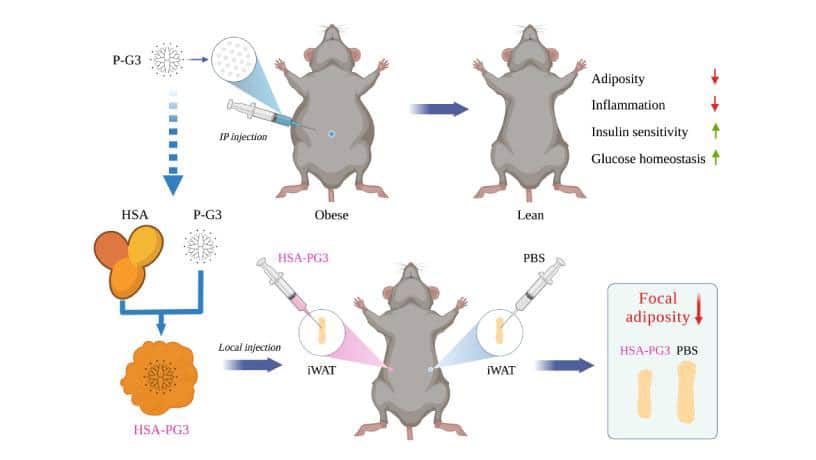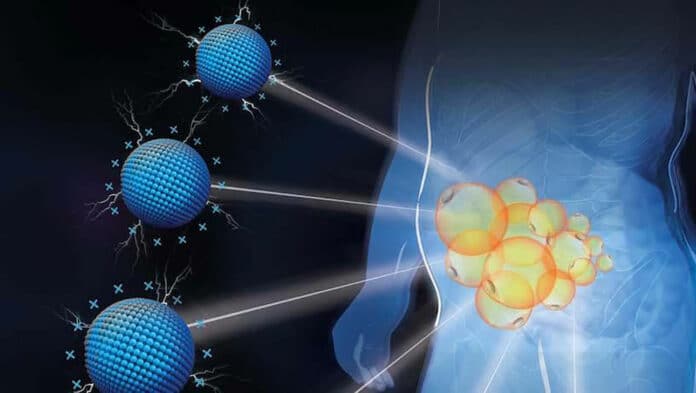Several studies suggest that obesity is a serious condition that can lead to hypertension, diabetes, chronic inflammation, and cardiovascular diseases. What’s more, there is a strong correlation between obesity and cancer.
The growth of fat cells, which arise from a tiny fibroblast-like progenitor, involves both activating the genes specific to those cells as well as increasing their size by accumulating more lipids (adipocytes and adipose tissue). In actuality, a fat cell’s primary purpose is to store lipids. However, excessive lipid accumulation can harm fat cells and cause obesity.
The solution to many people’s prayers would be the capacity to target fat cells and securely decouple bad fat accumulation from healthy fat metabolism. The fact that fat tissue, which is not continuous in the body but is instead located piece by piece in “depots,” has proved challenging to target in a depot-specific manner, targeted at the exact spot, presents a significant difficulty in the treatment of obesity.
Two recent investigations from scientists at Columbia Engineering and Columbia University Irving Medical Center (CUIMC) may hold the key to effectively and healthfully targeting fat tissue depots. The papers present a novel strategy for treating obesity by targeting specific fat deposits with cationic nanomaterials that can prevent the unhealthful accumulation of larger fat cells. In contrast to liposuction, which destroys fat, these materials reconstruct it.
The first study- focuses on visceral adiposity, or belly fat, whereas the second focuses on fat underneath the skin and chronic inflammation associated with obesity.
Scientists recognized that adipose tissue contains large amounts of negatively charged extracellular matrix (ECM) to hold fat cells. They hypothesized that the positively charged molecules would find a highway system in the negatively charged ECM network. So they administered PAMAM generation 3 (P-G3), a positively charged nanomaterial, to obese mice. The P-G3 swiftly disseminated throughout the tissue, and the team was delighted that their strategy to target visceral fat, in particular, had been successful.

P-G3 shut off the lipid storage program in fat cells, and the mice lost weight. This was unexpected, given the well-established function of P-G3 in neutralizing negatively charged pathogens, such as DNA/RNA cell debris, to alleviate inflammation.
Li Qiang, associate professor of pathology and cell biology at CUIMC, said, “Our approach is unique–It departs from the pharmacological or surgical approaches. We used cationic charge to rejuvenate healthy fat cells, a technique no one has ever used to treat obesity. I think this novel strategy will open the door to healthier and safer fat reduction.”
Kam Leong, Samuel Y. Sheng Professor of Biomedical Engineering and systems biology at CUIMC, said, “With P-G3, fat cells can still be fat cells, but they can’t grow up. Our studies highlight an unexpected strategy to treat visceral adiposity and suggest a new direction of exploring cationic nanomaterials for treating metabolic diseases.”
Journal References:
- Wan, Q., Huang, B., Li, T. et al. Selective targeting of visceral adiposity by polycation nanomedicine. Nat. Nanotechnol. (2022). DOI: 10.1038/s41565-022-01249-3
- Baoding Huang et al. Polycationic PAMAM ameliorates obesity-associated chronic inflammation and focal adiposity. Biomaterials. DOI: 10.1016/j.biomaterials.2022.121850
